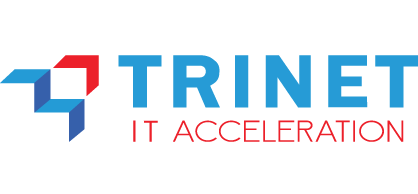Tech Innovation > Digital & IoT > Internet of Things (IoT)

Internet of Things (IoT)
Without this solution, organizations face the following challenges:
Limited Automation
Without IoT, automation of routine tasks is limited, leading to inefficiencies and increased manual labor.
Disconnected Systems
Without IoT, devices and systems operate in isolation, hindering seamless communication and data sharing across networks.
Lack of Real-time Data
Without IoT, access to real-time data is limited, delaying decision-making and reducing responsiveness to dynamic changes.

Key Features & Capabilities
Internet of Things (IoT) connects devices, enables automation, and enhances real-time data insights.
Show Details
a. Smart Homes
Automated Lighting and Security: Automated lighting, security systems, and energy management (e.g., Amazon Alexa, Google Nest).
b. Healthcare
Wearables and Remote Monitoring: Wearables (e.g., fitness trackers) and remote patient monitoring.
c. Agriculture
Precision Farming and Irrigation: Soil sensors for precision farming and irrigation control.
d. Smart Cities
Urban Optimization: Traffic management, waste optimization, and air quality monitoring.
e. Industrial IoT (IIoT)
Industrial Efficiency: Predictive maintenance, supply chain tracking, and machinery efficiency.

Business Benefits
Internet of Things (IoT) improves connectivity, automates processes, and optimizes resource management efficiency.
Show Details
a. Reduced Operational Costs
- Automation: IoT devices automate repetitive tasks (e.g., turning off lights, adjusting thermostats), reducing labor costs and human error.
- Predictive Maintenance: Sensors monitor equipment health in real time, preventing costly breakdowns and extending asset lifespan (e.g., factories saving millions by avoiding unplanned downtime).
- Remote Monitoring: Eliminates the need for manual inspections (e.g., checking pipelines, farm conditions) by enabling remote data collection and control.
b. Optimized Resource Utilization
- Energy Efficiency: Smart grids, HVAC systems, and lighting adjust usage based on demand, cutting utility bills (e.g., smart buildings reduce energy costs by 20–30%).
- Precision Agriculture: Sensors monitor soil moisture, weather, and crop health, enabling precise irrigation and fertilizer use, minimizing waste.
- Supply Chain Management: IoT tracks inventory, logistics, and storage conditions, reducing spoilage (e.g., perishable goods) and optimizing delivery routes.
c. Scalability and Flexibility
- Pay-as-You-Grow Models: IoT systems can start small and scale incrementally, avoiding large upfront investments.
- Cloud Integration: Leveraging cloud platforms for data storage and processing reduces the need for expensive on-premise infrastructure.
d. Enhanced Decision-Making
- Data-Driven Insights: IoT generates actionable data (e.g., consumer behavior, machine performance), enabling businesses to allocate resources more effectively.
- Real-Time Analytics: Immediate feedback allows for rapid adjustments (e.g., rerouting delivery trucks to avoid traffic), saving time and money.
e. Waste Reduction
- Smart Manufacturing: IoT identifies inefficiencies in production lines, reducing material waste and improving yield.
- Retail: Smart shelves track inventory levels in real time, preventing overstocking or stockouts.
f. Competitive Advantage
- Faster ROI: IoT solutions often deliver returns quickly through energy savings, reduced downtime, or improved productivity.
- Innovation: Businesses adopting IoT gain an edge by offering new services (e.g., subscription-based monitoring for industrial equipment).
g. Lower Maintenance Costs
- Condition-Based Monitoring: Instead of scheduled maintenance, IoT enables maintenance only when needed, reducing labor and parts costs.
- Self-Diagnostics: Devices can alert users to issues before they escalate (e.g., a smart fridge detecting a failing compressor).

Use Cases
Internet of Things (IoT) connects devices across industries, monitors performance, and boosts efficiency.
Show Details
a. Smart Home Automation
Examples:
- Smart Lighting: Lights adjust based on occupancy or time of day (e.g., Philips Hue).
- Security Systems: Cameras, doorbells (e.g., Ring), and smart locks with real-time alerts.
- Energy Management: Smart thermostats (e.g., Nest) optimize heating/cooling based on usage patterns.
Benefits:
- Reduced energy bills, enhanced security, and remote control via smartphones.
b. Healthcare & Remote Patient Monitoring
Examples:
- Wearables: Fitness trackers (e.g., Fitbit) monitor heart rate, sleep, and activity levels.
- Chronic Disease Management: IoT-enabled glucose monitors for diabetics.
- Telemedicine: Remote consultations and real-time health data sharing with doctors.
Benefits:
- Early diagnosis, reduced hospital visits, and personalized care.
c. Precision Agriculture
Examples:
- Soil Sensors: Monitor moisture, pH, and nutrient levels for optimal irrigation.
- Livestock Tracking: GPS collars track animal health and location.
- Drones: Survey crops and apply pesticides/fertilizers with precision.
Benefits:
- Higher crop yields, reduced water/chemical waste, and cost savings.
d. Industrial IoT (IIoT)
Examples:
- Predictive Maintenance: Sensors detect machinery vibrations/temperature to prevent failures.
- Asset Tracking: RFID tags monitor tools and equipment in factories.
- Quality Control: Cameras and sensors inspect products for defects in real time.
Benefits:
- Reduced downtime, improved safety, and optimized production.
e. Smart Cities
Examples:
- Traffic Management: IoT cameras and sensors adjust traffic lights to reduce congestion.
- Waste Management: Smart bins alert authorities when full, optimizing collection routes.
- Public Safety: Air quality sensors and flood detection systems provide early warnings.
Benefits:
- Lower operational costs, sustainability, and improved citizen services.
f. Energy & Utilities
Examples:
- Smart Grids: Balance energy supply/demand and integrate renewable sources.
- Smart Meters: Track electricity/water usage in real time for billing and leak detection.
- Renewable Energy: IoT monitors solar/wind farms to maximize efficiency.
Benefits:
- Reduced energy waste, lower carbon footprint, and cost savings.
g. Retail & Supply Chain
Examples:
- Smart Shelves: RFID tags track inventory levels and alert staff for restocking.
- Cold Chain Monitoring: Sensors ensure perishable goods (e.g., vaccines, food) stay within safe temperatures.
- Customer Analytics: Beacons send personalized offers to shoppers’ phones based on in-store behavior.
Benefits:
- Reduced stockouts, minimized spoilage, and enhanced customer experience.
h. Transportation & Logistics
Examples:
- Fleet Management: GPS trackers monitor vehicle location, fuel usage, and driver behavior.
- Autonomous Vehicles: IoT sensors enable self-driving cars to navigate safely.
- Public Transit: Real-time tracking of buses/trains via apps (e.g., Citymapper).
Benefits:
- Lower fuel costs, improved delivery times, and reduced accidents.
i. Environmental Monitoring
Examples:
- Wildlife Conservation: IoT collars track endangered species’ movements.
- Water Quality Sensors: Detect pollutants in rivers/lakes.
- Forest Fire Detection: Early alerts using temperature and smoke sensors.
Benefits:
- Proactive disaster response and ecosystem preservation.
j. Education
Examples:
- Smart Classrooms: IoT-enabled attendance systems, interactive whiteboards, and climate control.
- Campus Safety: Wearables for students to signal emergencies.
Benefits:
- Enhanced learning environments and student safety.

How It Works
Internet of Things (IoT) connects devices for smarter automation, data collection, and real-time insights.
Show Details
a. Device Connectivity
- IoT devices are connected through secure wireless networks (Wi-Fi, Zigbee, Bluetooth, etc.) to the central system.
- Each device is equipped with sensors to collect real-time data from its environment.
b. Data Collection & Transmission
- IoT devices collect data such as temperature, humidity, motion, or other environmental factors.
- The collected data is transmitted securely to a cloud or on-premises server for further processing and analysis.
c. Data Processing & Analysis
- Once the data is transmitted, it is processed and analyzed using advanced analytics, AI, or machine learning algorithms.
- This analysis generates insights or triggers automated actions to improve decision-making and system efficiency.
d. Real-Time Monitoring & Control
- Real-time monitoring dashboards visualize IoT data for system operators or end-users to track the status of connected devices.
- Users can remotely control or adjust device settings based on the analysis or real-time data.
e. Integration with Other Systems
- IoT systems can be integrated with other enterprise systems such as ERP, CRM, and SCM to enhance overall business operations.
- Automation and data sharing across systems help streamline processes and improve productivity.
f. Security & Privacy
- IoT solutions are built with robust security measures to protect data during transmission and storage.
- End-to-end encryption, multi-factor authentication, and regular firmware updates ensure device and network security.
g. Scalability & Flexibility
- IoT systems can scale easily by adding more devices to the network without disrupting existing infrastructure.
- Flexible architecture allows integration of a wide variety of devices with different communication protocols.
h. Energy Efficiency & Sustainability
- IoT systems help optimize energy usage by monitoring and controlling energy consumption across devices.
- This results in reduced operational costs and contributes to environmental sustainability by minimizing energy waste.
i. Predictive Maintenance
- IoT devices equipped with sensors can monitor the health of machinery and equipment in real-time.
- Data analysis can predict when maintenance is needed, preventing failures and reducing downtime.
j. Automation & Smart Decision Making
- IoT devices can trigger automated actions based on predefined rules or real-time data analysis, reducing manual intervention.
- Smart decision-making algorithms improve operational efficiency, resource allocation, and service delivery.
k. Application Areas
- IoT is used across various industries, including manufacturing, healthcare, agriculture, smart homes, and logistics.
- Its applications span from smart cities and smart homes to industrial automation and asset tracking systems.
Contact our experts for further information












